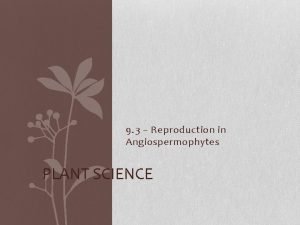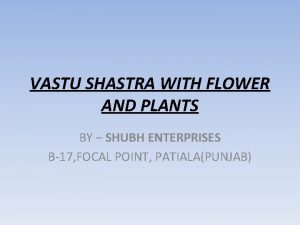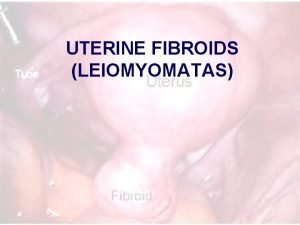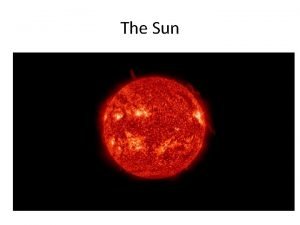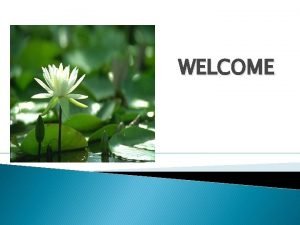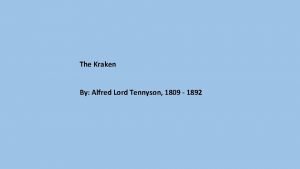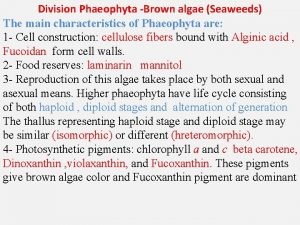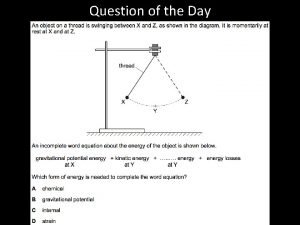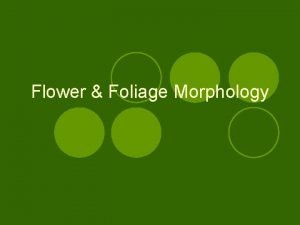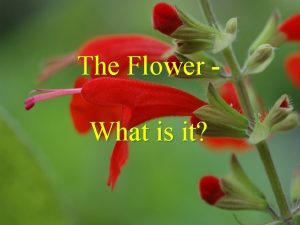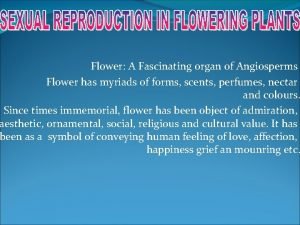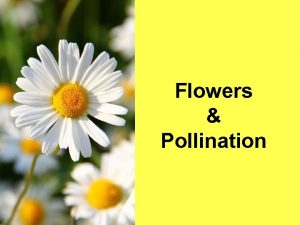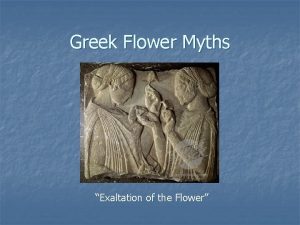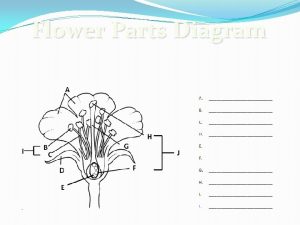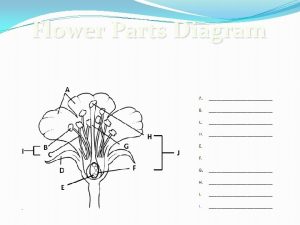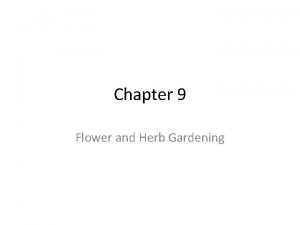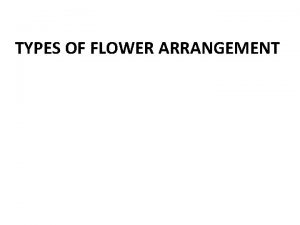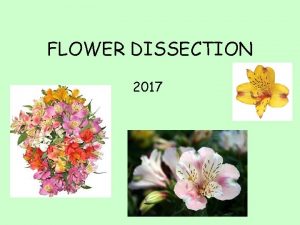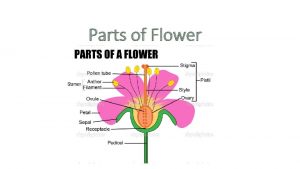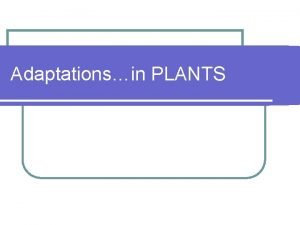The Diversity of Plants The huge foulsmelling flower




















































- Slides: 52

The Diversity of Plants

The huge, foul-smelling flower of the stinking corpse lily Parasite

What Is the Evolutionary Origin of Plants? • Photosynthetic protists – Probably similar to today’s algae – Lacked true roots, stems, leaves, and complex reproductive structures such as flowers or cones • Evolutionary tree of some major plant groups


Green algae gave rise to plants • Green algae, closest living relatives – DNA comparisons – same type of chlorophyll and accessory pigments for photosynthesis – Food storage • starch – Cellulose cell walls • The ancestors of plants lived in fresh water – Highly variable • Temperature • Chemicals in water • Periods of dryness

Key Features of Plants • • Multicellular Photosynthetic Plants are adapted to life on land Alternating generations of diploid and haploid stage (reference)

MI gametophyte (n) Haploid spores n n n MI SI TO SIS egg n sperm n FERTILIZATION 2 n Diploid 2 n zygote 2 n haploid diploid S n MEIOSIS spore mother cell TO sporophyte (2 n) embryo

Environmental challenges of plants living on land • • No supportive buoyancy of water Not bathed in a nutrient solution Air is a drying medium Gametes and zygotes cannot be carried by water currents or propelled by flagella

Plant Bodies Resist Gravity and Drying • Roots/root-like structures – anchor and get water and nutrients; all land plants • Waxy cuticle – limits water loss; all land plants • Stomata: gas exchange and limit water loss; all land plants • Conducting vessels – transport water and mineral in the plant; vascular plants • Lignin – increases rigidity, thereby increasing sun exposure; vascular plants

Plant Embryos Are Protected and Plant Sex Cells May Disperse Without Water • Well-protected and well-provisioned embryos – Seeds • wind – Fruit • Animal forager and dispersed the indigestible seeds • Waterless dispersal of sex cells – Pollens • wind – Flowers • Animal pollinators

What Are the Major Groups of Plants?

Two major groups of land plants • Nonvascular plants (moss…) – Lack Conducting Structures – Requires a moist environment ot reproduce – Straddles the boundary between aquatic and terrestrial life • Vascular plants (ferns, gymnosperms, flower plants)

Non-vascular plants Bryophytes • Lack true roots, leaves, and stems – Rootlike anchoring structure--- rhizoids • Bring water and nutrients into the plant body • Lack well-developed structures for conducting water and nutrients – Nonvascular – Diffusion or poorly developed conducing tissues to distribute water and other nutrients – Body size is limited • No supporting tissues in their bodies – Body size is less than 1 inch (2. 5 cm)

Liverworts grow in moist, shaded areas. This female plant bears umbrella-like archegonia 造卵器, which hold the eggs. Sperm must swim up the stalks through a film of water to fertilize the eggs. 苔蘚類植物具有直立 的假莖,其上著生假 葉,並有假根固著在 土壤內。

Moss plants, showing the stalks that carry sporebearing capsules. 苔蘚類植物,植物體平鋪 於地面上,腹部的假根則 固著在土壤內,以吸收水 分 Most mosses are confined to a wet environment -though some mosses have a waterproof covering that retains moisture preventing water loss and can survive in deserts (on bare rock) or in far northern and southern latitudes where humidity is low and water is scarce for much of the year

The leafy green gametophyte (lower right) is the haploid generation that produces sperm and eggs. emerging gametophyte Egg producing organ Sperm producing organ haploid diploid leafy gametophyte

capsules MEIOSIS Sporophyte develops within gametophyte FERTILIZATION emerging sporophyte capsules The sporophyte is topped by a brown capsule in which haploid spores are produced by meiosis.

capsules Life cycle of a moss MEIOSIS haploid spores emerging sporophyte capsules FERTILIZATION emerging gametophyte leafy gametophyte haploid diploid

Haploid Gametophyte stage of their alternation of generations is the most prominent phase

Bryophytes lack conducting structures • Rhizoids • Limited size – lack of vascular tissue and lignin • Sexual Reproductive structures (gametes) • a. Archegonia – produce eggs • b. Antheridia – produced swimming sperm • Gametophyte stage of their alternation of generations is the most prominent phase

Vascular plants • Vessels – A specialized groups of conducting cells • Allow water and nutrients absorbed by the roots to move to the upper portions of the plant – That are impregnated with the stiffening substance Lignin • adds extra support, – Vascular plants grow taller than nonvascular plants


The seedless vascular plants • include the ferns, club mosses, and horsetails – Produce swimming sperm, so water is essential for reproduction – Do not produce seeds, they propagate by spores • Diminished in size compared to their ancestors – Dominated the landscape hundreds of millions of years ago

The club mosses grow in temperate forests (few inches in height, ground pine) deer fern The giant horsetail (scouring rush)

Ferns • 1200 species • most diverse seedless vascular plants • Ferns are the only seedless vascular plants that have Broad leaves • Sporangia produce spores on special leaves of sporophyte – Spores are dispersed by the wind – give rise to tiny, haploid gametophyte which produce sperm and eggs

Sexual reproduction in ferns • Retains two traits that are reminiscent of the bryophytes 1. a small independently living gamete production plant body (gametophytes) exists 2. as in bryophytes, the sperm must swim through water to reach the egg

sporophyte masses of sporangia sporangium leaf MEIOSIS stem root Haploid spores, formed in sporangia located on the underside of certain leaves, are dispersed by the wind to germinate on the moist forest floor into inconspicuous haploid gametophyte plants. haploid diploid The dominant plant body is the diploid sporophyte.

FERTILIZATION archegonium gametophyte sperm antheridium haploid diploid sheetlike gametophytes, male antheridia and female archegonia produce sperm and eggs. The sperm must swim to the egg, which remains in the archegonium. The zygote develops into the large sporophyte plant.

sporophyte masses of sporangia sporangium leaf stem MEIOSIS root FERTILIZATION gametophyte haploid diploid


The seed plants • dominate the land • Distinguished from bryophytes and seedless vascular plants by pollen and seeds – pollen • Pollen grains – tiny structures that carry spermproducing cells • transport the sperm without water; dispersed by wind or animals – Seeds –consists of an embryonic plant, a supply of food for embryo, and protective coat • Seed coat – protects embryo and maintains dormancy • Stored food used by embryo until it does its own photosynthesis • Dispersed by wind, water, or animals

embryo stored food Pine seed (gymnosperm) seed coat Bean seed (angiosperm)

Gametophytes of seed plants • are microscopic • Female gametophyte is a small group of haploid cells • Male gametophyte is the pollen grain

Two major groups of seed plants • Gymnosperms ---- Lack flowers • Angiosperms ---- flowering plants

Gymnosperms • Are Non-flowering Seed Plants • Evolved earlier than the flowering plants • Conifer – 500 species – Pines, firs, spruce hemlocks and cypresses – Habitats: in the Cold latitudes of the Far north and At high elevations where conditions are dry

Three ways of conifers to adapt the cold and dry environment • 1. retain green leaves through out the year, enabling these plats to continue photosynthesizing and growing slowly – Evergreens • 2. leaves are covered with a thick waterproof surface that minimizes evaporation • 3. produce an antifreeze in their sap that enables them to continue transporting nutrients in below-freezing temperature – Give their fragrant piney scent

E. Gymnosperms 裸子植物 are nonflowering seed plants • 1. Conifers – adapted to dry, cold conditions • b. Male cones produce pollen dispersed by the wind • c. Female cones produce female gametophytes that develop and produce eggs • c. Embryos are enclosed in (naked) seeds dispersed when the scales of the female cone open

Reproduction of conifers • The tree is the diploid sporophyte • Develops both male and female cones – Male cones are relatively small (2 cm or less) • Release clouds of pollen during the reproductive season and then disintegrate – Female cones consists of a series of woody scales • Within which diploid cells undergo meiosis to produce haploid female gametophytes then develop and produce egg cells

scale of female cone mature sporophyte seedlings female cone ovule scale of male cone spore-forming cell MEIOSIS female gametophyte Male gametophyte (pollen) seed embryo haploid diploid Life cycle of the pine pollen Tube (14 months) egg cell FERTILIZATION

Ginkgo biloba Ginkgos 銀杏 probably the first modern-day seed plants to evolve And widespread during the Jurassic period (208 million yrs ago)

Cycads蘇鐵 probably evolved from ferns 160 species in tropic and subtropic lands

Angiosperms /flowering plants • are modern flowering seed plants • Dominated Earth for more than 100 million yrs • Highly diverse : 230, 000 species – – Duckweed浮萍 Eucalyptus tree尤加利樹 Grass Cactus • Rule over the plant kingdom

Flowers attract pollinators • Flower develop on the dominant sporophyte plant • May have evolved when gymnosperm ancestors formed an association with animals that carried their pollen from plant to plant – Less pollen produced



Life cycle of angiosperm • Flowers are the structures in which both male and female gametophytes are formed – Female gametophytes develop from an ovule in the ovary of a flower – Male gametophytes (pollen) are formed inside a structure called the anther • Pollen tubes transport sperm from the flower stigma to the egg in the ovary • Plant embryo enclosed in a seed formed from the ovule

seedling flower stigma anther food source mature sporophyte embryo ovule seed coat ovule spore-forming cell seed anther contains cells that form pollen each seed developed from one ovule MEIOSIS

pollen grain stigma pollen tube pollen (male gametophytes) spore FERTILIZATION sperm nuclei haploid female gametophyte egg cell diploid

seedling flower mature food source sporophyte embryo seed coat seed stigma anther ovule sporeforming cell anther contains cells that form pollen each seed developed MEIOSIS from one ovule MEIOSIS pollen grain stigma pollen tube FERTILIZATION pollen (male gametophytes) sperm nuclei female gametophyte egg cell spore haploid diploid

Fruits encourage seed dispersal seed each seed developed from one ovule pollen grain • The ovary surrounding the seed matures into a fruit • Help to disperse the seed – Edibility • seeds are undigested and dispersed stigma pollen tube FERTILIZATION – Clinging to animal fur – Form wings to fly in air sperm nuclei female gametophyte egg cell

Broad leaves capture more sunlight • When water is plentiful – Broad leaves provide and advantage by collecting more sunlight for photsynthesis • When water is in shortage – Seasonal leaf drop • Adaptations to avoid predation by herbivores – Physical defenses: Thorns, spines, and resins – Chemical defenses: poisonous or distasteful compd

 Genetic diversity vs species diversity
Genetic diversity vs species diversity Genetic diversity and biodiversity
Genetic diversity and biodiversity Angiospermophytes
Angiospermophytes Spider plant vastu
Spider plant vastu Nonvascular plants
Nonvascular plants Nonvascular plant diagram
Nonvascular plant diagram Features of non flowering plants
Features of non flowering plants C3 plants vs c4 plants
C3 plants vs c4 plants Which features of the sun look like huge cloudlike arches
Which features of the sun look like huge cloudlike arches What is a mountain
What is a mountain Huge fibroids
Huge fibroids A luminous ball of gas
A luminous ball of gas What is the sun
What is the sun Huge digital strategy
Huge digital strategy Huge surge artinya
Huge surge artinya Turtles are wonderful creatures subject and predicate
Turtles are wonderful creatures subject and predicate Are huge circular moving current systems
Are huge circular moving current systems Midwest iconography
Midwest iconography Bangladesh is blessed with huge inland open water resources
Bangladesh is blessed with huge inland open water resources Storm on the island themes
Storm on the island themes Cyrus daboo
Cyrus daboo Mysql huge pages
Mysql huge pages What is montags internal conflict
What is montags internal conflict Our earth is surrounded by a huge blanket of
Our earth is surrounded by a huge blanket of A huge amount of information
A huge amount of information Battening on huge sea worms
Battening on huge sea worms Brilliantbiome
Brilliantbiome Large monuments created by huge stones
Large monuments created by huge stones Economic importance of phaeophyta
Economic importance of phaeophyta The tyrannosaur with huge flaring nostrils
The tyrannosaur with huge flaring nostrils Huge labs
Huge labs Huge collections of stars
Huge collections of stars Images of weather systems on television come from *
Images of weather systems on television come from * A ball is held above the ground and then is dropped
A ball is held above the ground and then is dropped Hát lên người ơi alleluia
Hát lên người ơi alleluia Khi nào hổ con có thể sống độc lập
Khi nào hổ con có thể sống độc lập Diễn thế sinh thái là
Diễn thế sinh thái là Vẽ hình chiếu vuông góc của vật thể sau
Vẽ hình chiếu vuông góc của vật thể sau Công thức tính thế năng
Công thức tính thế năng Làm thế nào để 102-1=99
Làm thế nào để 102-1=99 Tỉ lệ cơ thể trẻ em
Tỉ lệ cơ thể trẻ em Lời thề hippocrates
Lời thề hippocrates Vẽ hình chiếu đứng bằng cạnh của vật thể
Vẽ hình chiếu đứng bằng cạnh của vật thể đại từ thay thế
đại từ thay thế Quá trình desamine hóa có thể tạo ra
Quá trình desamine hóa có thể tạo ra Các môn thể thao bắt đầu bằng tiếng chạy
Các môn thể thao bắt đầu bằng tiếng chạy Thế nào là mạng điện lắp đặt kiểu nổi
Thế nào là mạng điện lắp đặt kiểu nổi Hình ảnh bộ gõ cơ thể búng tay
Hình ảnh bộ gõ cơ thể búng tay Khi nào hổ mẹ dạy hổ con săn mồi
Khi nào hổ mẹ dạy hổ con săn mồi Dạng đột biến một nhiễm là
Dạng đột biến một nhiễm là Nguyên nhân của sự mỏi cơ sinh 8
Nguyên nhân của sự mỏi cơ sinh 8 độ dài liên kết
độ dài liên kết Gấu đi như thế nào
Gấu đi như thế nào


